Specific Phase Modulation with Dynamic Variable Spectral Width of Nanosecond Optical Pulse in High-Power Lasers
Abstract
:1. Introduction
2. Principle and System Structure
2.1. Principle of Constant Amplitude Phase Modulation
2.2. Principle of Specific Phase Modulation
2.3. Structure of Specific Phase Modulation
3. Simulations and Experimental Results
3.1. Simulations Results
3.2. Experimental Results
4. Discussion
5. Conclusions
Author Contributions
Funding
Institutional Review Board Statement
Informed Consent Statement
Data Availability Statement
Acknowledgments
Conflicts of Interest
References
- Xu, D.; Tian, X.; Zhou, D.; Zong, Z.; Fan, M.; Zhang, R.; Zhu, N.; Xie, L.; Li, H.; Wang, J.; et al. Temporal pulse precisely sculpted millijoule-level fiber laser injection system for high-power laser driver. Appl. Opt. 2017, 56, 2661–2666. [Google Scholar] [CrossRef]
- Penninckx, D.; Beck, N.; Gleyze, J.F.; Videau, L. Signal propagation over polarization-maintaining fibers: Problem and solutions. J. Lightwave Technol. 2006, 24, 4197–4207. [Google Scholar] [CrossRef]
- Dorrer, C.; Roides, R.; Cuffney, R.; Okishev, A.V.; Bittle, W.A.; Balonek, G.; Consentino, A.; Hill, E.; Zuegel, J. Fiber front end with multiple phase modulations and high-bandwidth pulse shaping for high-energy laser-beam smoothing. IEEE J. Sel. Top. Quantum Electron. 2013, 19, 219–230. [Google Scholar] [CrossRef]
- Hocquet, S.; Penninckx, D.; Bordenave, E.; Gouédard, C.; Jaouën, Y. FM-to-AM conversion in high-power lasers. Appl. Opt. 2008, 47, 3338–3349. [Google Scholar] [CrossRef] [PubMed]
- Lindl, J.; Amendt, P.; Berger, R.L. The physics basis for ignition using indirect-drive targets on the national ignition facility. Phys. Plasmas 2004, 11, 339–491. [Google Scholar] [CrossRef]
- Dorrer, C. Spectral and temporal properties of optical signals with multiple sinusoidal phase modulations. Appl. Opt. 2014, 53, 1007–1019. [Google Scholar] [CrossRef] [PubMed]
- Bian, Y.; Jiao, K.; Wu, X.; Yang, H.; Zhu, R. Utilizing phase-shifted long-period fiber grating to suppress spectral broadening of a high-power fiber MOPA laser system. High Power Laser Sci. Eng. 2021, 9, e39. [Google Scholar] [CrossRef]
- Vidal, S.; Luce, J.; Penninckx, D. Experimental demonstration of linear precompensation of a nonlinear transfer function due to second-harmonic generation. Opt. Lett. 2011, 36, 88–90. [Google Scholar] [CrossRef]
- Waxer, L.J.; Kelly, J.H.; Rothenberg, J.; Babushkin, A.; Bibeau, C.; Bayramian, A.; Payne, S. Precision spectral sculpting for narrowband amplification of broadband frequency-modulated pulses. Opt. Lett. 2002, 27, 1427–1429. [Google Scholar] [CrossRef]
- Li, R.; Fan, W.; Jiang, Y.; Qiao, Z.; Zhang, P.; Lin, Z. Tunable compensation of GVD-induced FM-AM conversion in the front end of high-power lasers. Appl. Opt. 2017, 56, 993–998. [Google Scholar] [CrossRef]
- Qiao, Z.; Wang, X.; Fan, W.; Lin, Z. Demonstration of a high-energy, narrow-bandwidth, and temporally shaped fiber regenerative amplifier. Opt. Lett. 2015, 40, 4214–4217. [Google Scholar] [CrossRef]
- Guo, J.; Wang, J.; Pan, X.; Lu, X.; Xia, G.; Wang, X.; Zhang, S.; Fan, W.; Li, X. Suppression of FM-to-AM conversion in abroadband Nd:glass regenerative amplifierwith an intracavity birefringent filter. Appl. Opt. 2019, 58, 1261–1270. [Google Scholar] [CrossRef]
- Yang, X.; Ren, C.; Xu, H.; Ma, Y.; Shao, F. Transport of ultraintense laser-driven relativistic electrons in dielectric targets. High Power Laser Sci. Eng. 2020, 8, e2. [Google Scholar] [CrossRef]
- Park, H.S.; Hurricane, O.A.; Callahan, D.A.; Casey, D.T.; Dewald, E.L.; Dittrich, T.R.; Döppner, T.; Hinkel, D.E.; Hopkins, L.B.; Pape, S.; et al. High-adiabat high-foot inertial confinement fusion implosion experiments on the National Ignition Facility. Phys. Rev. Lett. 2014, 112, 055001. [Google Scholar] [CrossRef] [PubMed]
- Guardalben, M.J.; Barczys, M.; Kruschwitz, B.E.; Spilatro, M.; Waxer, L.J.; Hill, E.M. Laser-system model for en-hanced operational performance and flexibility on OMEGA EP. High Power Laser Sci. Eng. 2020, 8, e8. [Google Scholar] [CrossRef]
- Zhang, J.; Wang, W.; Yang, X.; Wu, D.; Ma, Y.; Jiao, J.; Zhang, Z.; Wu, F.; Yuan, X.; Li, Y.; et al. Double-cone ignition scheme for inertial confinement fusion. Phil. Trans. R. Soc. A 2020, 378, 20200015. [Google Scholar] [CrossRef] [PubMed]
- Bowers, M.; Cohen, S.; Erbert, G.; Heebner, J.; Hermann, M.; Jedlovec, D. The injection laser system on the National Ignition Facility. Solid State Lasers XVI Technol. Devices 2007, 6451, 399–418. [Google Scholar]
- Temporal, M.; Canaud, B.; Garbett, W.J.; Ramis, R.; Weber, S. Irradiation uniformity at the Laser MegaJoule facility in the context of the shock ignition scheme. High Power Laser Sci. Eng. 2014, 2, e8. [Google Scholar] [CrossRef]
- Rabault, M.; Luce, J.; Pennincks, D. Random and pseudo-random phase modulations for FM-to-AM reduction in high power lasers. Appl. Opt. 2018, 57, 9288–9295. [Google Scholar] [CrossRef]
- Huang, C.; Lu, X.; Jiang, Y.; Wang, X.; Qiao, Z.; Fan, W. Real-time characterization of FM-AM modulation in a high-power laser facility using an RF-photonics system and a denoising algorithm. Appl. Opt. 2017, 56, 1610–1615. [Google Scholar] [CrossRef]
- Hocquent, S.; Lacroix, G.; Pennincks, D. Compensation of frequency modulation to amplitude modulation conversion in frequency conversion systems. Appl. Opt. 2009, 48, 2515–2521. [Google Scholar] [CrossRef] [PubMed]
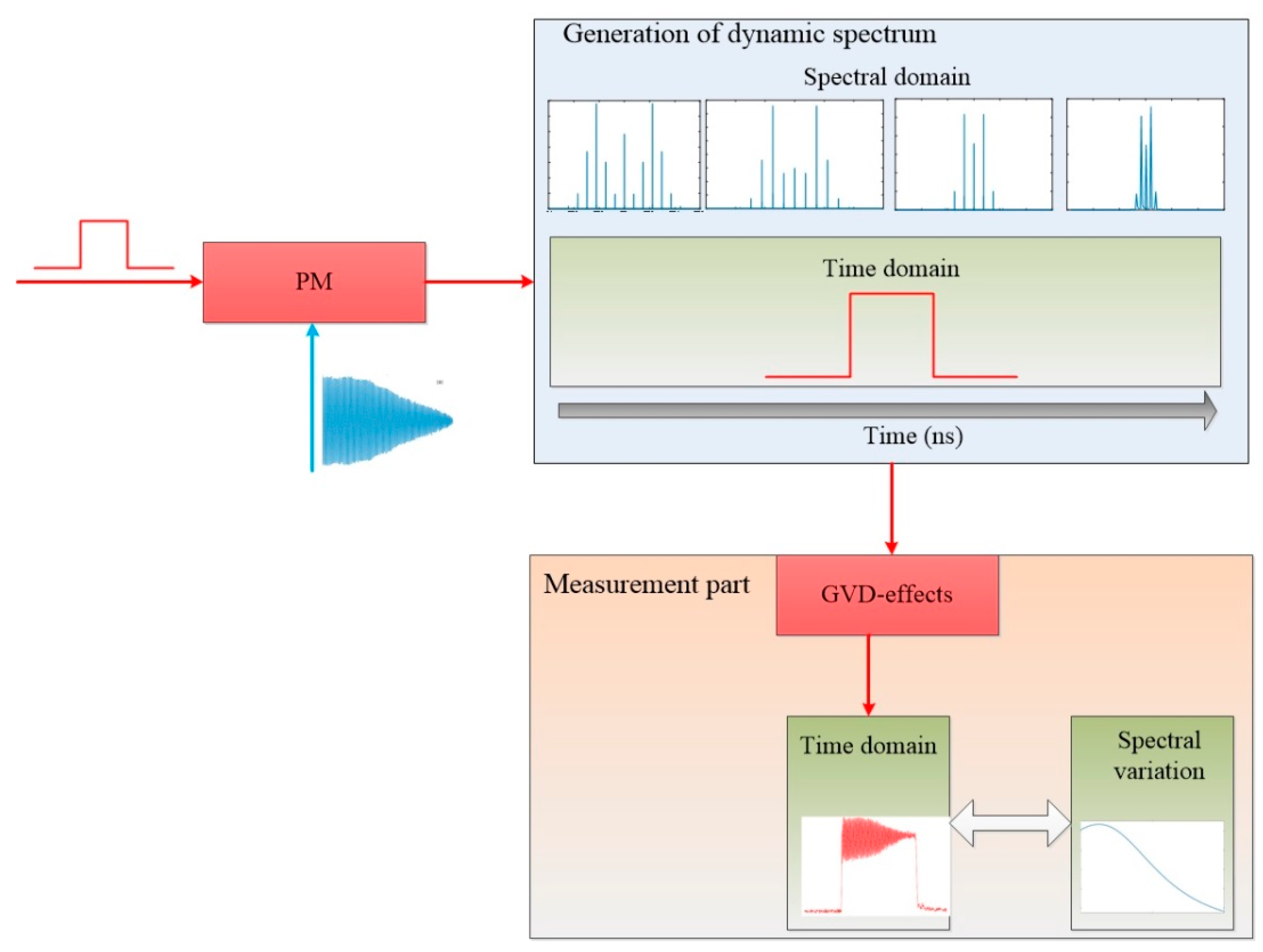
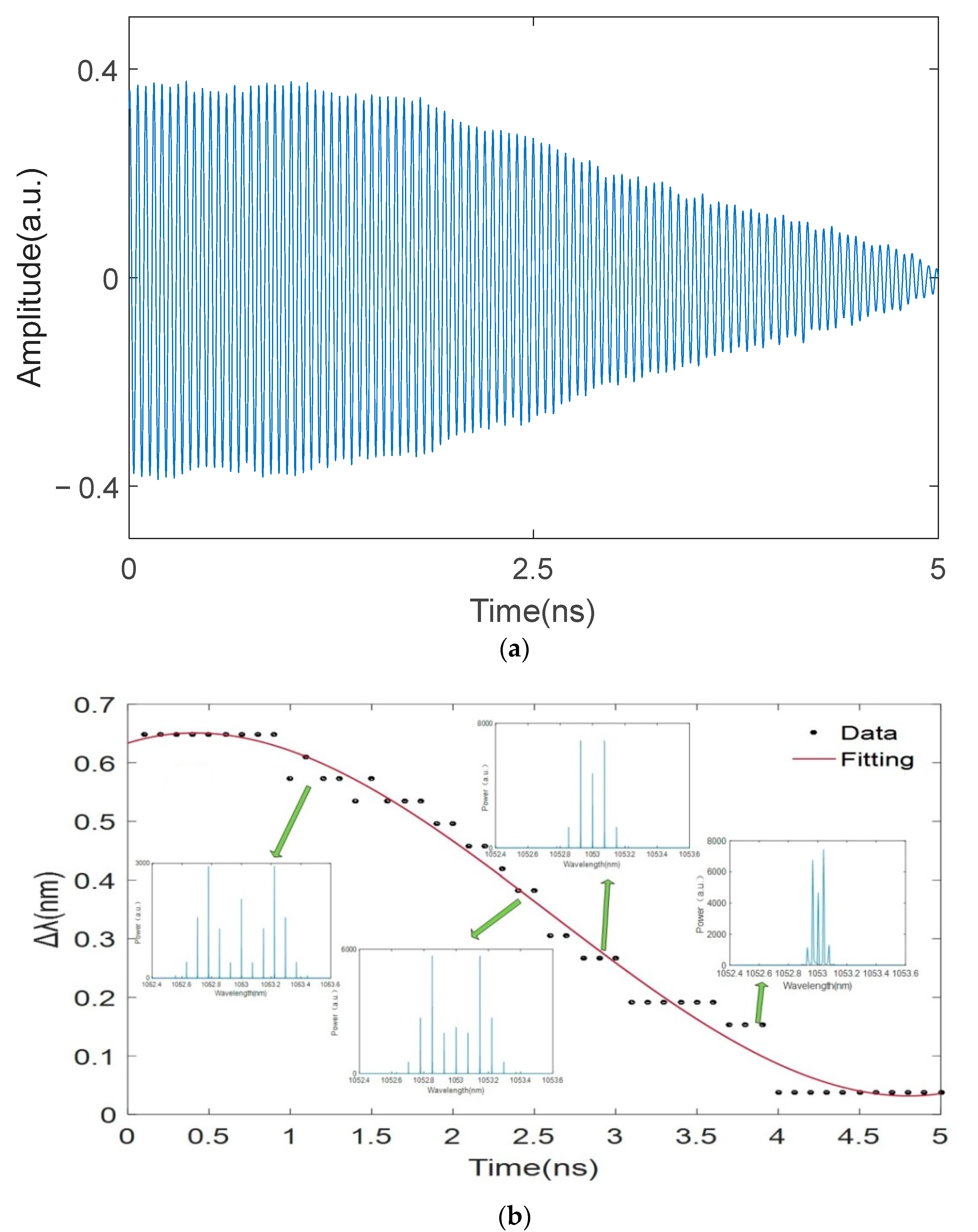
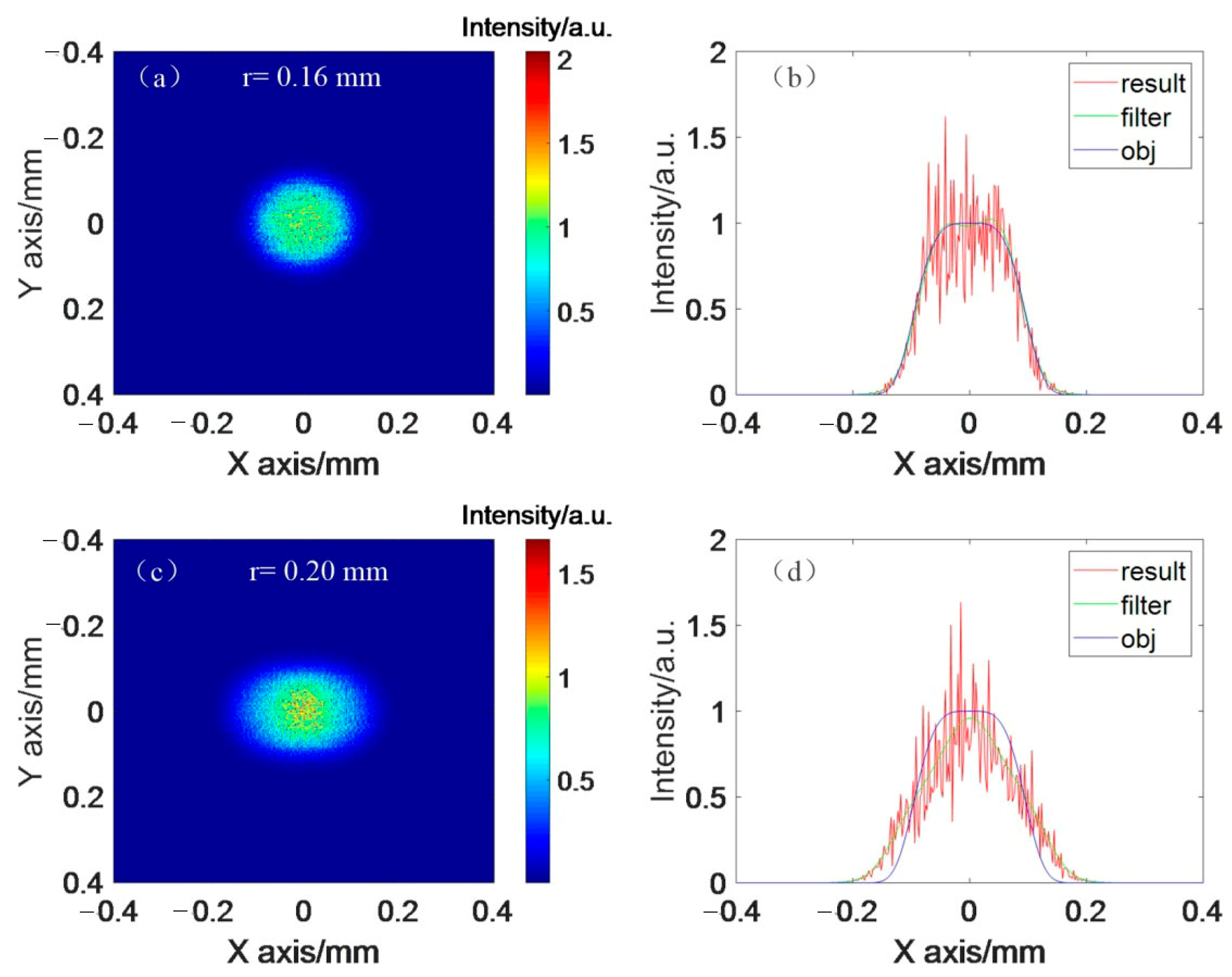
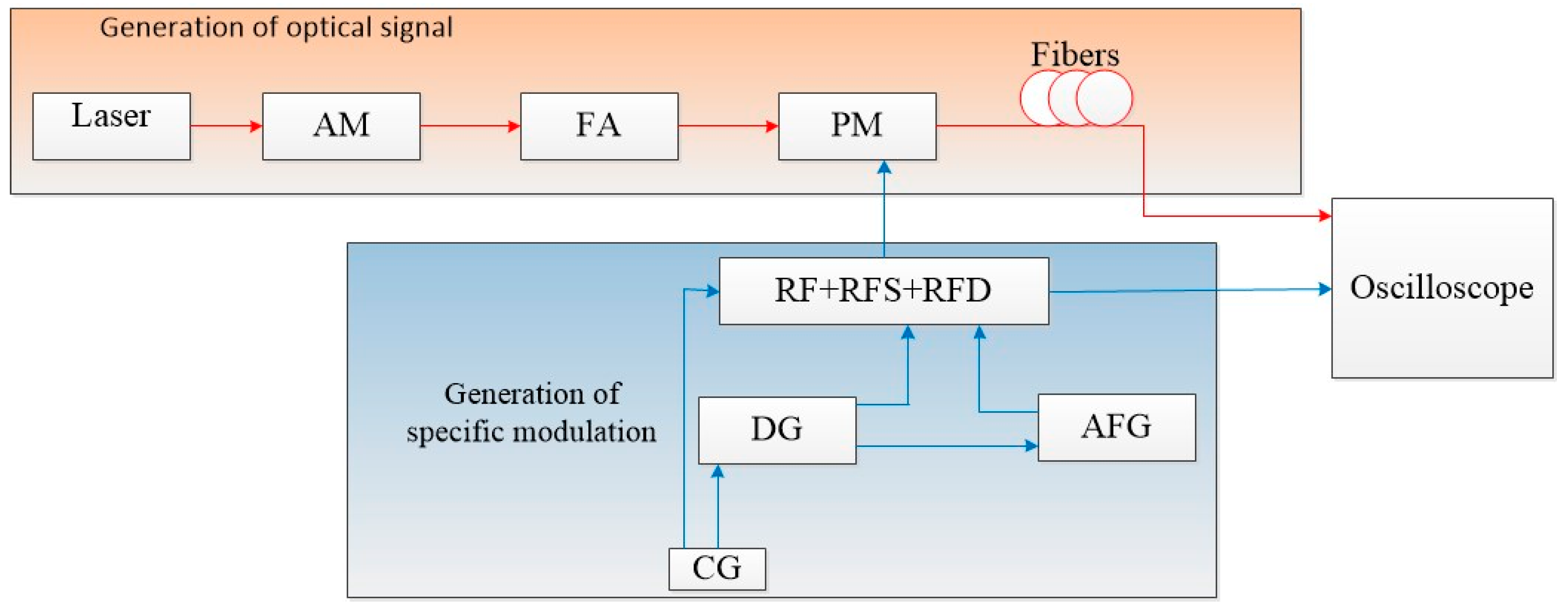

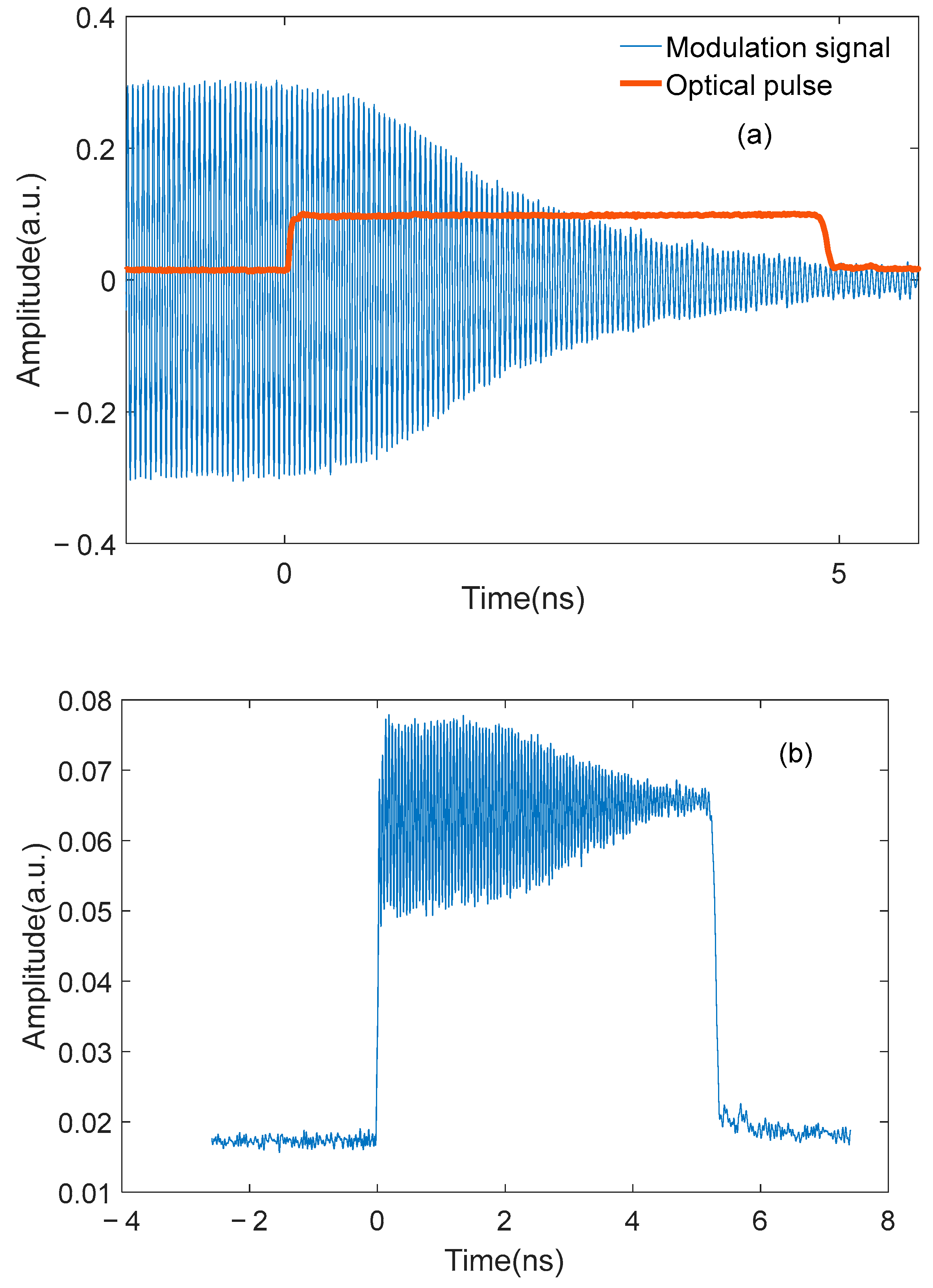
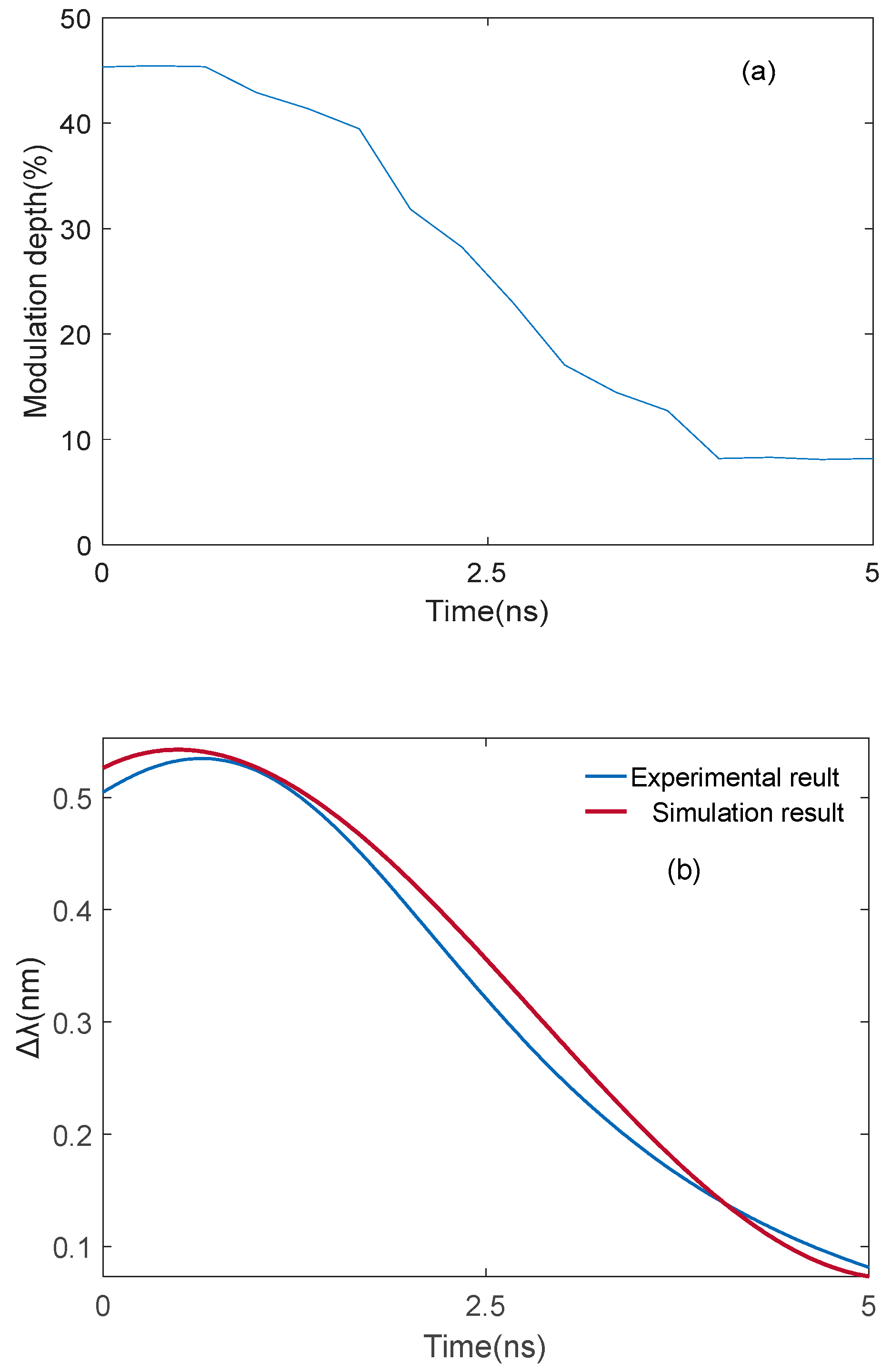
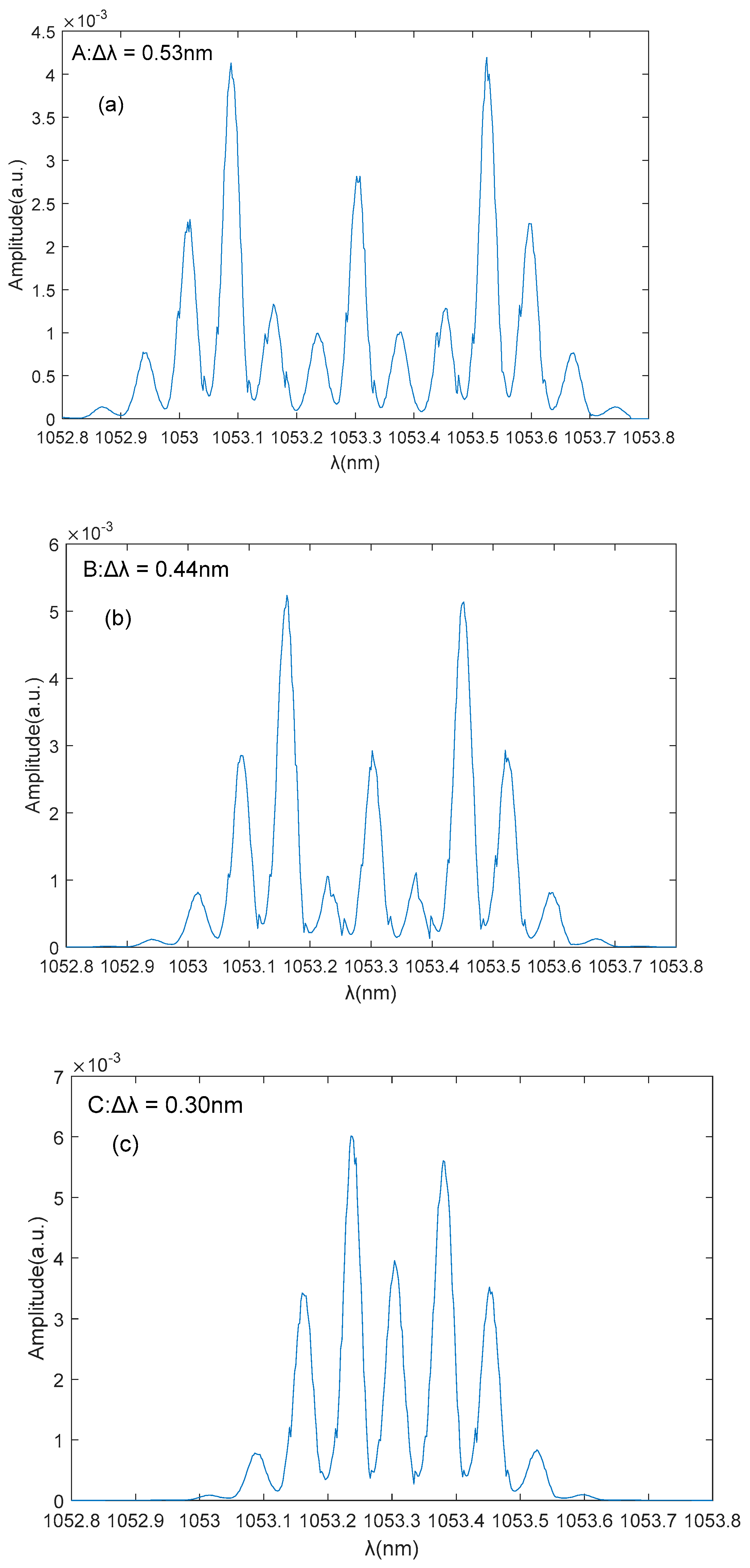


Publisher’s Note: MDPI stays neutral with regard to jurisdictional claims in published maps and institutional affiliations. |
© 2022 by the authors. Licensee MDPI, Basel, Switzerland. This article is an open access article distributed under the terms and conditions of the Creative Commons Attribution (CC BY) license (https://creativecommons.org/licenses/by/4.0/).
Share and Cite
Qian, X.; Wang, X.; Xu, S.; Xiao, Z.; Wang, Y.; Zhou, S.; Fan, W. Specific Phase Modulation with Dynamic Variable Spectral Width of Nanosecond Optical Pulse in High-Power Lasers. Photonics 2022, 9, 586. https://doi.org/10.3390/photonics9080586
Qian X, Wang X, Xu S, Xiao Z, Wang Y, Zhou S, Fan W. Specific Phase Modulation with Dynamic Variable Spectral Width of Nanosecond Optical Pulse in High-Power Lasers. Photonics. 2022; 9(8):586. https://doi.org/10.3390/photonics9080586
Chicago/Turabian StyleQian, Xinlei, Xiaochao Wang, Shouying Xu, Zhuli Xiao, Yue Wang, Shenlei Zhou, and Wei Fan. 2022. "Specific Phase Modulation with Dynamic Variable Spectral Width of Nanosecond Optical Pulse in High-Power Lasers" Photonics 9, no. 8: 586. https://doi.org/10.3390/photonics9080586



